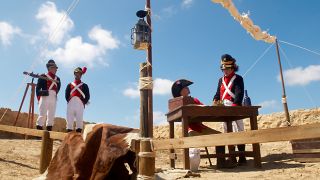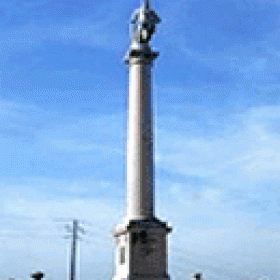The Historic Route of Linhas de Torres

Over 200 years old, the string of Napoleonic Wars forts known as the Linhas de Torres at Torres Vedras are the visible remains of the struggle between the Portuguese and the French for sovereignty that occurred at the beginning of the 19th Century.
The Torres Vedras region had an overwhelmingly important role in defending the city of Lisbon against Napoleon's troops that were advancing towards the Portuguese kingdom's capital. Construction was secretly ordered by the 1st Duke of Wellington in 1809 who headed the British troops who had come to Portugal's aid as an ally. They have become known as one of the biggest lines of defences still in existence in Europe.
The goal was to build a number of fortifications that would occupy the most strategic points north of Lisbon, taking advantage of the region's topography along six municipalities: Arruda dos Vinhos, Loures, Mafra, Sobral de Monte Agraço, Vila Franca de Xira and Torres Vedras. Therefore a defensive system of three lines of towers was built, with a total of 152 fortified bulwarks and 600 pieces of artillery, defended by around 140,000 troops.
The first line covered a 46 km extension between Alhandra, on the banks of the River Tejo and the Atlantic Ocean and Torres Vedras. The second line was situated 13 km further south and the third line protected the port of São Julião da Barra (St. Julian of the Bar), right in the river estuary, in Lisbon. It is know that a fourth line existed on the Setúbal peninsular to stop the French from advancing from the south, although little is known about it.
The Linhas de Torres can be explored by car or there are short walks, which in addition to the fortifications, include various points of military, religious, natural, archaeological and cultural interest, such as windmills which were used as advanced lookout posts. More information at www.rhlt.pt.
The Municipal Museum of Torres Vedras is a must see to find out more about the weapons and uniforms used at the time, maps and an interesting three-dimensional reconstruction of the Linhas de Torres defensive complex. Also not to be missed is the Torres Vedras Castle of Moorish origin, and St. Vincent's Fort which was the nerve centre in the defence against Napoleonic troops which never managed to get past the 1st line of towers during the third invasion.
In Mafra, the Convent should be visited; one of the most important monuments of the Portuguese Baroque and the symbol of the absolutist reign of King João V. Strategically situated on the 2nd line of defence, it was occupied by General Junot's troops during the 1st French invasion in 1807 and, one year later, retaken by the British army which maintained its General Staff Headquarters there until 1828.
Historical note
Recalling a little of the Linhas de Torres history, we need to go back to 1809 when the Prince Regent Dom. João VI and the Portuguese court had fled to Brazil and the nation lived under the possibility of a third French occupation. Prior to that because Portugal had disobeyed Napoleon's order to block the maritime ports to British ships, the French General Junot occupied Lisbon at the end of 1807 whilst General Soult occupied Porto. Both were expelled from Portuguese territory by the British-Portuguese army under the command of Sir Arthur Wellesley, the 1st Duke of Wellington, and Marshal Beresford, as part of the alliance between the two countries.









 Explore
Explore 
 Remember and Share
Remember and Share 


